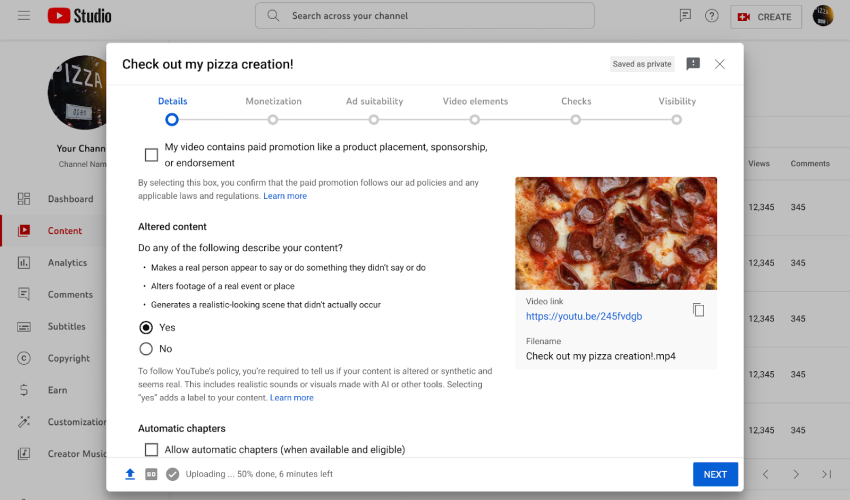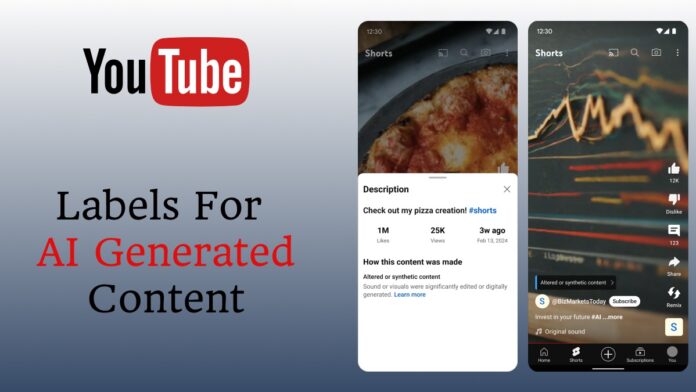Hello to all of you.We are going to talk about a trending topic on the internet today: YouTube AI Rule on the disclosure of films featuring generative AI content.
The world of content development is evolving quickly, let us face it. With the advancement of artificial intelligence (AI) capabilities, developers can now accomplish incredible feats. With AI, we can produce lifelike voices, edit films with ease, and even build whole scenes. However, this authority also carries obligations.
A new policy on YouTube requires creators to identify any occasions in which their movies use generative AI to the extent that viewers might mistake it for authentic content. Viewers will consequently be in a better position to comprehend what they are viewing and select the material that best meets their requirements.
What precisely does this upgrade signify for both us, the developers, and you, the viewers? Let us dissect it.
Why YouTube Disclose AI-Generated Content?
Think about it. Imagine watching a news report where a political leader is saying something shocking. But what if that leader never actually said those words? AI could be used to create a realistic video of them delivering a completely fabricated speech. This is where things get tricky.
Making AI-generated content public aids in the fight against false information and advances openness. It enables viewers to examine the content critically and to be aware of the creative process that went into making the film.
Here are some specific examples of content that will require disclosure under the new policy:
- Swapping faces: Imagine a celebrity interview where the interviewee’s face is replaced with someone else’s. This could be for humor, satire, or even malicious purposes. Disclosing the use of AI helps viewers understand the authenticity of the content.
- Synthetic narration: A video might use a computer-generated voice to narrate a historical event. While this can be a great storytelling tool, disclosure ensures viewers know it’s not an actual recording.
- Altered footage: Imagine a documentary where real-life events are manipulated with AI to create a specific narrative. Disclosing this manipulation allows viewers to form their own opinions based on the truth.
What Doesn’t Need Disclosure?
Not all AI use requires a label. Here are some exceptions:
- Clearly unrealistic content: Cartoons, animations, and videos with fantastical elements using AI don’t need disclosure.
- Minor alterations: Basic color grading, special effects like blurring, and beauty filters are considered standard editing tools and won’t require a label.
- AI for assistance: If AI is used for things like generating script ideas, captions, or editing suggestions, disclosure isn’t necessary.

What Does This Mean for Creators?
This update might seem like extra work, but it’s actually a positive step. By disclosing AI use, creators are building trust with their audience. It shows transparency and allows viewers to appreciate the creativity behind the video.
Here’s how creators can comply with the new policy:
- YouTube Upload Flow: There’s a new tool in the upload flow where creators can easily disclose if their video uses AI in a way that might seem real.
- Be Clear and Concise: A simple statement in the video description or a title card mentioning the use of AI is sufficient.
Also See: 10 Best YouTube to MP3 Converters for Hassle-Free Music Downloads
The Future of AI and Content Creation
This is just the beginning. AI is a powerful tool that will continue to shape the way content is created. YouTube’s update is a step towards responsible use of this technology.
As creators, it’s important to embrace transparency and use AI ethically. Viewers, on the other hand, should be critical consumers of information and be aware of the potential for AI manipulation.
Here are some things to keep in mind as we move forward:
- Critical Thinking: Always question what you see online. Look for evidence to support claims and be wary of sensationalized content.
- Multiple Sources: Don’t rely on a single video for information. Cross-check facts with trusted sources before forming an opinion.
- Engage with Creators: Ask questions in the comments section and support creators who are transparent about their process.
Together, producers, consumers, and platforms such as YouTube can guarantee a safe online arena where artificial intelligence is applied for the benefit of creative and educated discourse.
So, what do you think about YouTube’s new policy? Let me know in the comments below! And don’t forget to like and subscribe for more content creation discussions!


